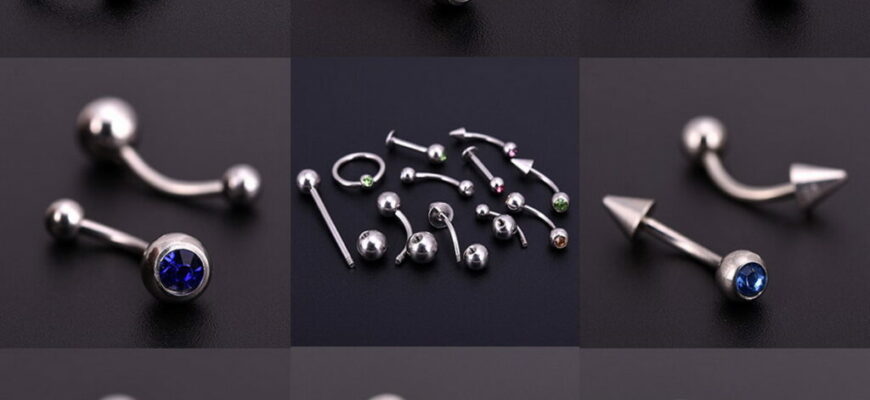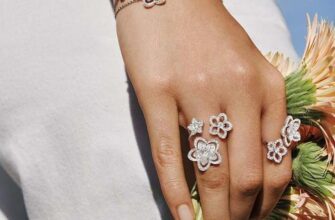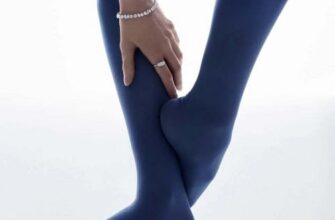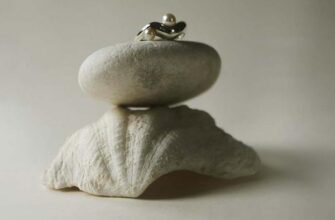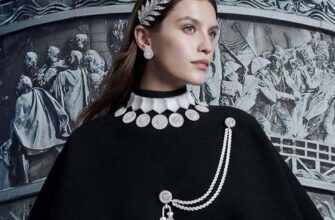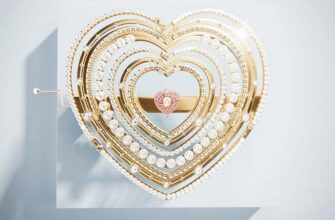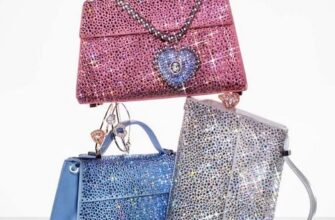There are more and more piercing jewelry, and lovers of such accessories use them for various parts of the body. Barbells, bananas, labrets, monroes, twisters - we tell you what they are and how they differ.
Types of products for piercing various parts of the body
Earring - jewelry in the form of a ring, pendant, etc. passed into the earlobe. Most often, earrings are made of gold, silver and other metals, as well as bone and precious woods. Initially, earrings were predominantly male jewelry. Later they became an important element of women's fashion.
ATTENTION! The term "earring" does not apply to all other types of piercing jewelry! They have their own separate names. There are no such concepts as “navel earrings”, “nose earrings”, etc.

To help you figure it out, we have made a selection of the main types of piercing jewelry with photos and will supplement it as necessary.
Kliker - This is a piercing jewelry with a snap-on closure mechanism, which can be in the form of a straight bar or continue the shape of a circle.
The clicker is suitable for many punctures - for the wing of the nose, in day, in conch, septum, helix (these are the most convenient types of jewelry for the septum, because due to its snap mechanism, such jewelry is very easy to change on your own).

Rod (eng. Barbell) - an ornament consisting of a straight rod (base) of circular cross section on which balls (spikes, cones, wraps, etc.) are screwed or screwed on both sides. There are types of rods with internal and external threads. Universal jewelry is widely used for most types of piercings. Punctures of the tongue, cartilage (helix, scapha, flat, industrial), cheeks, nose (bridge, septum), genital piercing, etc.

Banana (eng. Banana) is a decoration in the form of a curved rod with wraps on both sides, balls are wound (cones, spikes, wraps with crystals, etc.). There are types of bananas with internal and external threads. Used for navel, eyebrow, ear, nipple, intimate piercing, etc. Materials used for production: 316L steel, black steel (PVD), gold, bioplastic, ASTM F136 titanium, PTFE, etc.


Labret (Eng. Labret) - piercing jewelry, consisting of a base (straight stick), a disc on one side and a ball or wrap on the other. They exist as solid bases i.e. the disk is fixed, and collapsible, with an unscrewed disk. There are options for external and internal threads, i.e. balls or wraps are either wound onto the base or screwed into it.
The labret is the most popular primary jewelry because it forms a straight channel when worn, and the labret has different lengths and thicknesses, so they are selected based on your individual anatomy. Suitable for ears, lips, etc.
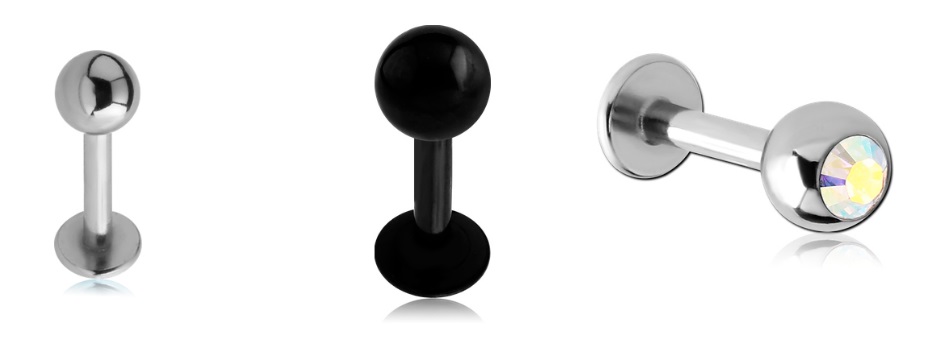
Micro labret (English Micro labret) features a thinner shank (1,0 mm or 1,2 mm) and is suitable for piercing earlobes, ear cartilage and nose piercing.
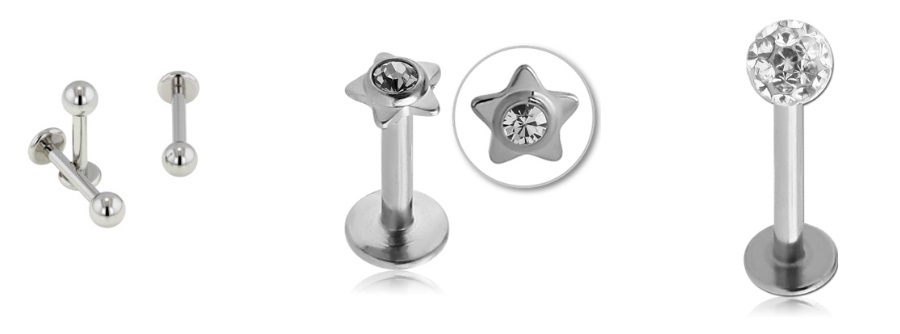
Fang/spiral (English Claw / Ear spiral) - jewelry for extended earlobe piercing. The fangs are made in the form of a curved cone, spirals, respectively, have the shape of spirals from here and the name. In addition to being worn for beauty, they are used as "stretch marks" to gradually increase the channels. Most often made from organic matter, but you can also find metal or acrylic products.

Twister/Spiral (eng. Twister, Body spiral) - jewelry for piercing in the form of a spiral with decorative windings at the ends. Used for cartilage piercings of the ear and lobes, but also suitable for installation in the nose and lips, labia, navel. Materials used for production: 316L steel, ASTM F136 titanium or titanium (PVD coated), black steel and other materials.

Nostril (English Nostril or Nose Studs) - a decoration for the wing of the nose, usually in the form of a hook bent under the right or left nostril, or a straight “stick” - such nostrils are universal, the piercing master gives the shape before installation in the puncture. Used for nose only. The bowl is most often made of: 316L steel, gold, bioplastic, black titanium (PVD) and other materials.
Мы we do not recommend to put such decoration, it does not have a tight fixation and very easily flies out of punctures if the nostril is hooked (a better alternative is a wrapped labret).

Separately, you can select special rings for the nose, they are inserted into the puncture of the wing of the nose from the inside
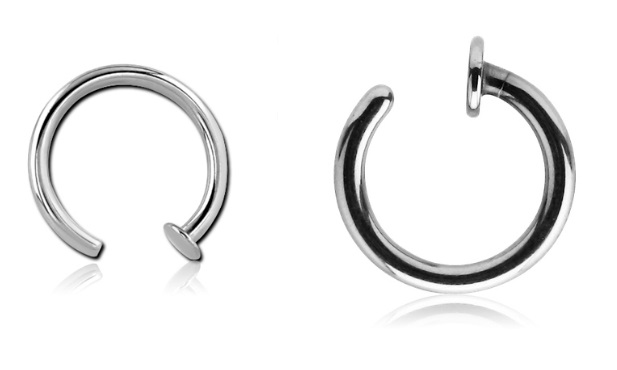
Circular (eng. Circular barbell) - an ornament in the form of an incomplete ring or horseshoe with twists at the ends (it resembles a crescent in shape). Circulars are suitable for almost all punctures. The most commonly used materials for production are: ASTM F136 titanium, 316L steel, gold, bioplastic, etc.
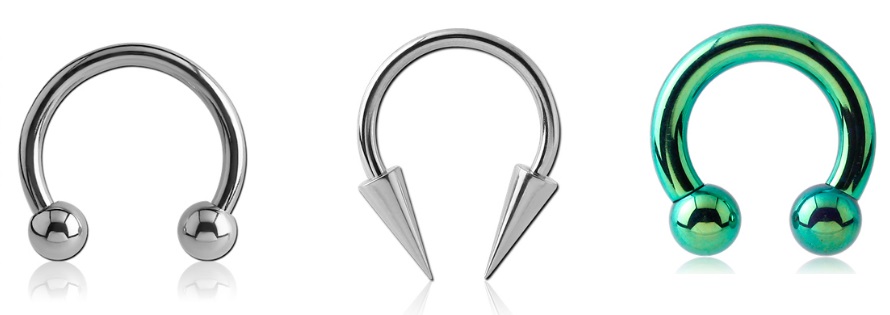
piercing ring (Eng. Ball Closure Ring or Segment Ring) - a ring with a removed segment, instead of which a ball is inserted, the segment itself or a curly insert. Suitable for ear, nose, lip, genital, nipple, eyebrow, navel and tip of tongue piercings. Rings are classic (segment) and with various inserts. The most common sizes: section diameter from 1,2 mm to 10 mm or more. Ornament diameter from 6 mm and more.

How to choose a piercing jewelry?
The right choice of jewelry for piercing speeds up the healing process and reduces the risk of inflammation, and while wearing the jewelry will bring you only joy and comfort.
First of all, pay attention to the material of the decoration. - gold, silver, medical (surgical) steel are not suitable for wearing in punctures, they contain harmful impurities that oxidize during wearing and cause inflammation (this is especially dangerous during the initial healing of the puncture).
Also on gold and silver jewelry there is an engraving of a sample, which injures a puncture. The best material for piercing jewelry is titanium - one of the most hypoallergenic metals.
When choosing jewelry for a particular type of piercing, it is better to trust the master. This recommendation sounds everywhere and everywhere, but in the case of punctures of the face and body, it is as relevant as possible. The master will select an accessory that will best “fit” on the desired part of the body and will look harmonious, and not foreign. Therefore, before buying jewelry, it makes sense to come for a consultation and choose the most suitable type of accessory.
